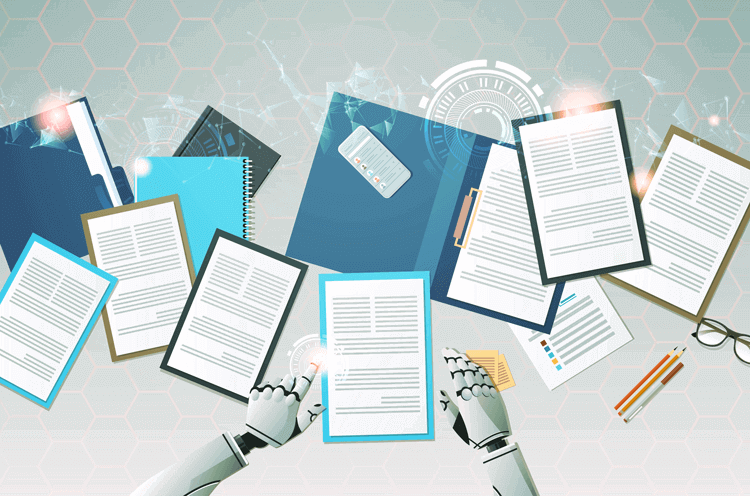14 Challenges in IT That Teams Are Facing in 2024
In 2024, IT Service Management teams are facing more challenges than ever. In this article, we review the top 14 challenges in IT that many leaders and CIOs are saying they're struggling with. We also suggest what can be done to resolve these issues.

From increased cybersecurity threats, especially with the use of "deepfake" AI-based technology, to budgetary constraints, recruitment and retention challenges, to managing data security, working in IT involves constantly juggling new (and old) challenges.
Let's explore some of the most relevant, recurring, and new IT challenges for 2024.
Top 14 Challenges in IT in 2024
-
New Cybersecurity Threats (Including AI-Based Dangers)
Cybersecurity threats have always been front-of-mind with IT leaders. This is even in organizations with dedicated cybersecurity managers. However, ITSM team members and leaders need to be hyper-vigilant over the use of "deepfake" AI-based technology in the hands of cybercriminals.
That's right, in 2024, IT leaders are battling all of the usual cybersecurity threats, and now AI being used to create "deepfake" videos that are costing companies millions in fraud.
Deepfake videos are as much a training issue as an IT one. In most cases, a deepfake is only going to work if emails appear to genuinely come from a colleague, usually a senior leader, or a verified supplier. So, ITSM and cybersecurity teams need to start taking this seriously to ensure your organization isn't the next one in the news to be tricked into losing millions.
-
Cloud or On-Site Storage
A more traditional concern is managing cloud or on-site storage. Companies need to decide whether they should bring data storage and management back in-house and on-site.
In recent years, there's been a growing concern in IT and from CIOs that too much of an organization's infrastructure is outsourced in data centers.
One SaaS leading the revolution back to on-site, whereby companies control their own infrastructure and software, is 37Signals. Realizing that not every CIO wants to manage 5 or 6 figures in SaaS spend every month, 37Signals has created ONCE. We expect this trend could accelerate in 2024.
-
IT Skills Gap and Recruitment
IT is a challenging sector for recruiting and retaining talent. Not only that, but 93% of employers report an overall skills gap among IT professionals.
Organizations need to assess where there are skills gaps within IT teams. They should also review how extra training and other support can be provided to help improve team member productivity.
-
Budgetary Constraints
IT leaders with budgets to manage are constantly worrying about whether they're spending them the right way and if they'll be renewed for the next fiscal year. CIOs have a lot to juggle: staff, vendors, storage, SaaS providers, and cybersecurity.
To ensure budgets stay strong:
- Keep making the relevant business cases
- Review performance against KPIs
- Push for the right investments and budgets when reallocations are required
-
Integrating AI-Based Automation
CIOs and ITSM leaders are now finding they need to integrate AI-based automation whenever it's possible and makes sense. It doesn't always. But, when it does, AI tools can improve automation, digital transformation, and overhaul time-consuming legacy systems. An example of this might be AI ticketing.
Take a look at where you can integrate AI-based automation into your systems and processes. Also, ask vendors whether they'll be providing updated software with AI integrations.
-
Struggling with Legacy IT Systems and Outdated Support
The flip side of this is that some companies might be using outdated systems that are no longer going to be supported by vendors. If that's the case, ask yourself whether it's worth trying to keep using out-of-date technology. If not, what can you buy into or build that would do the same job more effectively?
For the sake of improved productivity, sourcing newer SaaS vendors is more cost-effective. This is especially true if legacy technology is going to be obsolete soon.
-
Internal and External Communication
Despite pushback in 2023, remote or hybrid work is the future and one that many employees and organizations are refusing to give up on in 2024. It comes with enormous cost benefits. According to Global Workplace Analytics, savings can be anywhere between $2500 — $11,000 per year for every employee who works from home (WFH) at least 50% of the time.
For IT leaders, this means that internal and external comms have to align with this reality. This puts security and connectivity more prominently on an IT leader's radar and within budgetary planning. They need to make sure employees who aren't on-site are just as secure and connected as workers in the office. This can especially be when they're handling external customer-facing communications.
-
Managing Data and Data Security
Another remote-centric concern is about managing data and data security, especially when employees are WFH. Data security is always going to be a serious concern. It is even more relevant in 2024 when we factor in the danger of deepfake videos and emails within the cybersecurity matrix.
-
Managing Remote Teams
As CIOs know, remote and hybrid work isn't going away. Too many employees would prefer to work from home. Organizations that aren't happy with that are starting to lose talent to those who are offering remote/hybrid working. This means that ensuring remote systems are more secure and robust than ever is a concern for ITSM teams. This also has to involve improving security from fake and real internal threats and external cybersecurity dangers.
-
Maintaining Business Continuity
Business continuity is another ITSM-related issue. IT leaders need to have redundancies and safeguards in place in the event of an IT disaster or other issue that could affect operational practices. Have you road-tested your most recent business IT disaster plan? If not, now is the time to ensure you're prepared for 2024 and beyond.
-
Complex IT Systems, SaaS Tech Bloat
Too many organizations are juggling overly complicated and often redundant layers of IT systems and SaaS vendor relationships. Review everything, including legacy platforms. Check what software departmental heads are using that have been onboarded without IT oversight.
Aim to make sense of your bloated IT jungle in 2024. This can help you clearly see what everyone is using and where cost-cutting and consolidations can be implemented. It's also useful from a security perspective, to ensure that what the software team members are using is up-to-date and as secure as possible.
-
Managing SaaS Vendor Relations
With dozens or hundreds of vendors in a tech stack comes increasingly complex vendor relations. Managing all of this, alongside the actual cost, is the price organizations pay for tech bloat. This includes numerous interrelated integrations, software overlaps, and needing to contact support if anything goes wrong.
One way to overcome this is to review whether all of these subscriptions are value for money. Then see whether some vendors provide the same service at a lower rate. Also, ITSM leaders should have all of their software vendors in a single dashboard to make all of this easier to manage.
-
Data Protection and Privacy
Data protection and privacy are more important now than ever before. Organizations are facing increasing cybersecurity threats, and in most cases, criminals want access to customer data. Thanks to AI bots and deepfake content, it's now more affordable to try and cyberattack large and mid-size organizations.
As a result, IT leaders need to invest more in cybersecurity and training to ensure sensitive customer data is protected and secure from internal and external threats.
-
Lack of Change Management Strategy
Despite software, cloud computing, apps, and AI being everywhere, there's a surprising lack of change management strategy in larger organizations. And this usually includes healthcare and insurance, and other sectors that have been slow to adapt to changing times.
IT leaders and CIOs need to take advantage of exciting new change management opportunities to ensure they're not left behind in 2024.
How to Overcome IT Challenges in 2024
There are a number of ways IT leaders can overcome IT challenges in 2024, including:
- Reviewing whether it's worth continuing with legacy systems or upgrading systems with SaaS tools or in-house development
- Assessing whether you have too many SaaS and cloud platforms and how to consolidate them to improve operational efficiency and security
- Assessing whether your cybersecurity measures and training are up-to-date against present and emerging cyber threats
- Integrating AI-based automation tools into existing workflows, software, and systems
- Ensuring that your team has future-proofed remote and hybrid working arrangements so that it's scalable for now and this trend continuing
- Strengthening software security across the organization
- Reviewing change management and digital transformation opportunities for 2024
Is it Time Your Business Experienced the Giva Difference?
Give has a suite of SaaS tools for IT teams including:
Giva helps teams achieve Service Management excellence:
- Deploy in days, train in 1 hour
- Robust, fast & painless reporting for higher-quality decision-making
- Highly customizable without programming or consultants





